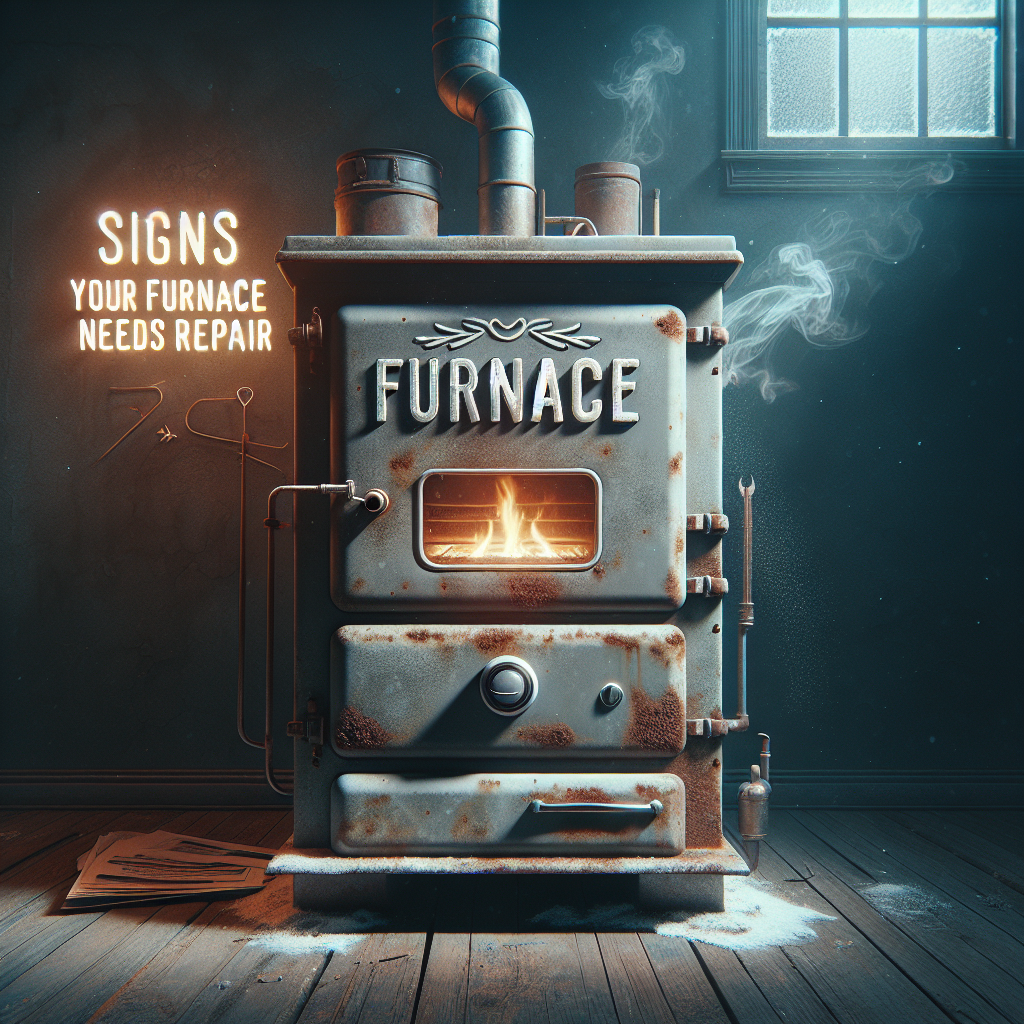When the chill of winter sets in and temperatures drop, the last thing you want is a malfunctioning furnace. However, just like any other mechanical system, furnaces can develop issues over time. Recognizing the signs that your furnace needs repair can save you from an unexpectedly cold home and costly emergency repairs. In this guide, we will delve into the key indicators that your furnace may need professional attention.
1. Unusual Noises: What Are They Telling You?
One of the first signs that something may be wrong with your furnace is the emergence of unusual noises. While it’s normal for furnaces to make some noise as they operate, any loud bangs, clanks, or rattles could indicate a problem.
- Banging or Clanking Sounds: Often indicative of loose or broken components.
- Squeaking or Whistling: Could signal a malfunctioning fan or motor.
- Rattling: Often a sign of loose parts or debris inside your furnace.
If you notice any of these sounds, it’s best to call in a professional to diagnose the problem before it escalates further.
2. Inconsistent Heating: Is Your Furnace Struggling?
Does your home seem to have cold spots or inconsistent temperatures? You may find some rooms too hot while others remain chilly. This could mean your furnace is not distributing heat evenly.
Possible Causes:
- Clogged Air Filters: Dirty air filters restrict airflow, causing uneven heating.
- Duct Issues: Leaks or blockages in your ductwork can prevent warm air from reaching certain areas of your home.
- Thermostat Malfunctions: An improperly calibrated thermostat may not be accurately sensing the temperature.
If uneven heating persists, it’s crucial to have a technician investigate the root cause.
3. Strange Smells: Understanding the Odors
A properly functioning furnace shouldn’t emit any unusual odors. If you detect strange smells, like burning or rotten eggs, it could indicate an issue that needs immediate attention.
Common Odors and Their Meaning:
- Burning Smell: This could be normal if you’re just starting the furnace for the season, as dust burns off. However, a persistent burning smell could mean electrical components are failing.
- Gas Odor: A rotten egg scent indicates a gas leak, which is extremely dangerous. Evacuate immediately and call your gas company or emergency services.
Safety First: Never ignore unusual smells; err on the side of caution.
4. Frequent Cycling: Is Your Furnace Overworking?
If your furnace is frequently turning on and off (a phenomenon known as short cycling), it puts extra strain on your system and can lead to premature wear and tear.
Why It Happens:
- Thermostat Issues: Incorrect thermostat placement or malfunction could cause it to inaccurately read the temperature.
- Oversized Furnace: A furnace that is too large for your space will heat the area quickly, causing it to turn on and off frequently.
Addressing frequent cycling can enhance your furnace’s efficiency and prolong its lifespan.
5. Increased Energy Bills: Paying More for Less Heat
Noticing a spike in your energy bills? When your furnace isn’t operating efficiently, it can lead to higher energy costs.
What to Consider:
- Age of Your Furnace: Older models tend to consume more energy.
- Neglected Maintenance: Regular maintenance can help keep your furnace running efficiently.
- Repairs Needed: If your furnace is malfunctioning, it may require more energy to operate.
If your energy costs are rising without explanation, reach out to a professional to evaluate your furnace’s efficiency.
6. Yellow Burner Flame: Is Your Furnace Safe?
When checking your furnace, pay attention to the color of the burner flame. A healthy furnace should produce a blue flame. A yellow or orange flame can indicate a malfunction, possibly leading to carbon monoxide production.
Important Note:
Carbon monoxide is a colorless, odorless gas that can be deadly. If you suspect your furnace is producing carbon monoxide, turn it off immediately and contact a professional.
7. Age of Your Furnace: Time for an Upgrade?
Finally, consider the age of your furnace. Most furnaces last between 15 and 20 years. If your furnace is approaching or has exceeded this age, it may be time to think about replacement rather than repair.
Benefits of Upgrading:
- Increased energy efficiency
- Improved heating performance
- Enhanced safety features
Conclusion: Keep Your Home Warm and Safe
Being attentive to the signs that your furnace needs repair will not only keep your home cozy but can also save you from future headaches and expenses. Don’t hesitate to call a professional when you notice any of these indicators. Regular maintenance and prompt repairs can extend the life of your furnace, ensuring that it operates efficiently for years to come. Stay warm this winter, and remember, a little attention goes a long way in maintaining your home’s heating system.


